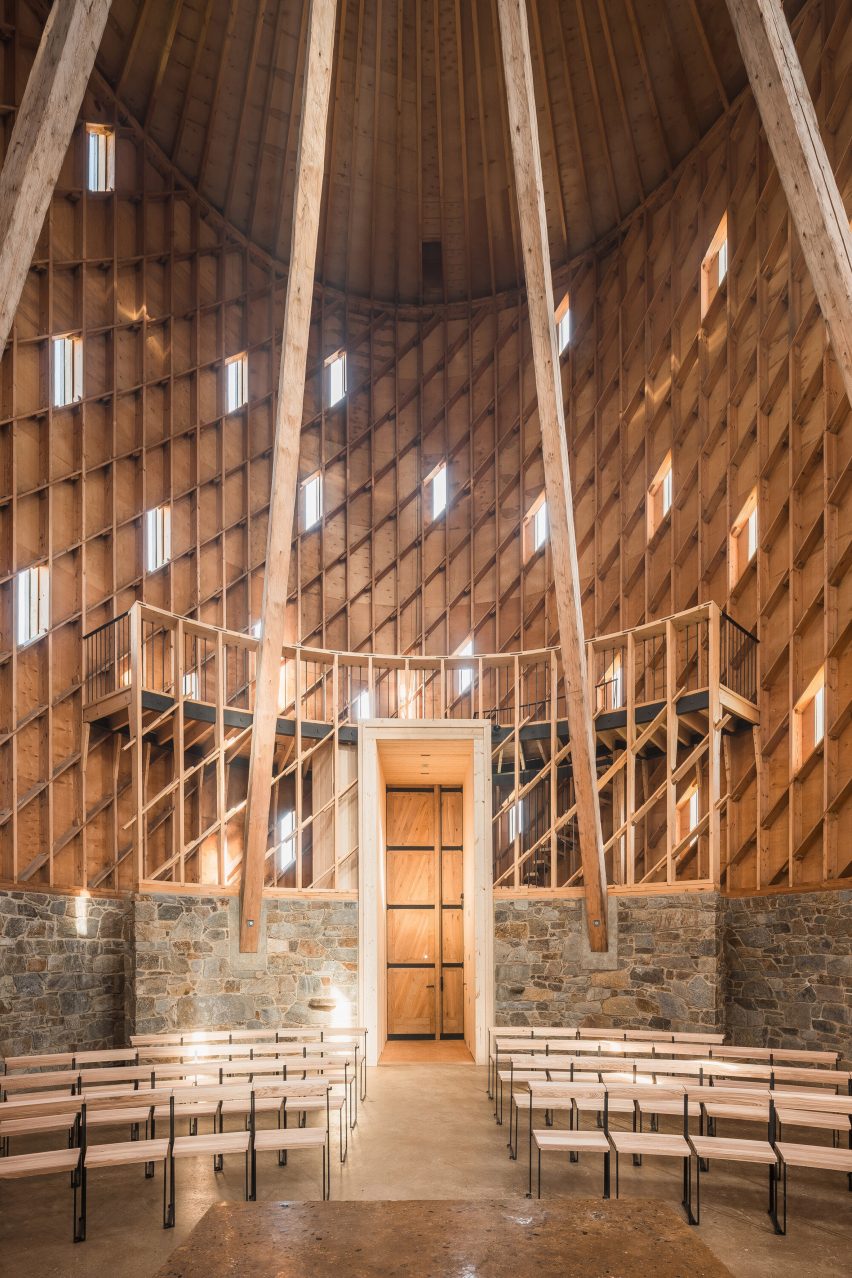Medieval construction techniques informed the stone plinth and hand-hewn timber columns of Our Lady of Sorrows Chapel in the Czech Republic, completed by local architecture studio RCNKSK.
Named after and dedicated to the Virgin Mary, the chapel was funded by a community in the village of Nesvačilka near Brno, which lacked a local place of worship for over a century.
RCNKSK’s design comprises a cylindrical form that culminates in a tall steel spire, with material choices that were informed by the story of the Virgin Mary.

The vision was to create a building that would not only shape the landscape but also leave an indelible mark on the culture, society, and heritage of this place,” RCNKSK co-founder Jan Říčný told Dezeen.
“The chapel is dedicated to Our Lady of Sorrows, chosen by the locals as a symbol of the profound suffering she endured,” Říčný continued. “Her story, imbued with emotion, is woven into the very fabric of the space.”
Our Lady of Sorrows Chapel sits on a stone base intended to represent humanity, which the studio said is “stubborn, unyielding, and difficult to shape”. It is punctured by a five-metre-high entrance door.

Rising from this base are seven large hand-hewn timber beams, representing the seven sorrows of Mary, which meet in a circular skylight in the roof framed by the external spire.
Wrapping the central space, the cylindrical wall of the chapel was created using CNC-cut wooden elements, chosen to create a modern contrast to the hand-carved columns.
“I sought to create a chapel that would feel timeless in the landscape, so its origins would be uncertain as if it had always belonged to the land,” said Říčný.
“The design blends the wisdom of tradition with the ingenuity of modernity. Inspired by medieval craftsmanship, the structure dialogues with contemporary technologies,” he continued.
“This philosophy influenced the choice of materials – natural, though uncommon in the region – such as stone and wood. These materials carry a deep symbolism: a beacon of faith rising from a parched earth.”

The gridded timber wall structure creates a pattern of rhombuses across the interior, several of which have been cut out to create small windows that Říčný describes as representing “Mary’s tears, weeping over us”.
Externally, Our Lady of Sorrows Chapel’s volume has been clad with small, vertically-laid wooden planks that will weather over time, with the thin windows offering glimpses of the diagonal wooden structure within.

Around the perimeter, paths are framed by apple trees, which will grow to form avenues connecting the chapel to the village and surrounding fields.
Other contemporary chapels recently featured on Dezeen include a concrete structure in South Korea by Atelier KOMA, designed to offer a feeling of “separation from the secular world”, and an inverted pyramid in Portugal by Bernardo Rodrigues Architects.
The photography is by Ondřej Bouška.

